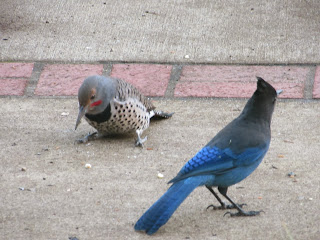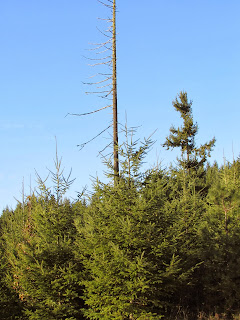Thank you, thank you, thank you for the many comments and compliments on "The Rabbit Alphabet" post of a couple of days ago.
A couple of folks asked what I floss I used.
I stitched the sampler using three skeins of Crescent Colours - "Betty Bluebell".
I used my WIP Wednesday to finish up a little stitch I began while in England this summer.
Design - "Bee Busy Bee Happy"
Chart - "Summer Trio"
Designer - Homespun Elegance
Fabric - 28 count Dirty Cashel linen
Fibers - DMC - 2 strands over 2 threads
Started - 13 August 2013 (London, England)
Completed - 30 October 2013 (Eugene, Oregon)
I changed the font of "Bee Happy - Bee Busy" and added a couple of small bees to the design.
Autumn seems to be a busy time for the woodpeckers.
I think I saw and heard a Pileated yesterday, but he didn't stick around.
I have had LOTS of Flickers at the feeders.
This is a female...
...and here's a male.
They are pretty tough and will run off the Starlings which is fine with me.
While Flickers appear graceful in flight, they aren't very graceful on the ground. (Here's one with a Steller's Jay).
Look how wide-spread his stance is.
That's a bit odd as Flickers are also ground-feeders. They regularly work the back and front yards searching for insects.
See the big tall dead tree?
That's my Acorn Woodpeckers' Granary Tree.
What's a granary tree? I'll explain in a bit.
The Acorn Woodpeckers are a very compatible couple.
I see them together regularly.
Here's the female...
...and here's the male.
And here's a close up of their Granary Tree.
If you enlarge the photo you can see that they have drilled hole after hole, and stashed dozens of acorns in the tree. As the acorns dry out they get smaller and become loose. The birds will move the acorns into smaller tighter holes. They work and work and work on their tree talking to one another constantly. They are not particularly melodic birds - they remind me of parrots. I do admire their commitment to creating a store to help tide them over. I think the Starlings and Jays pester them trying to get at their stash, but they appear to stand their ground.


















































